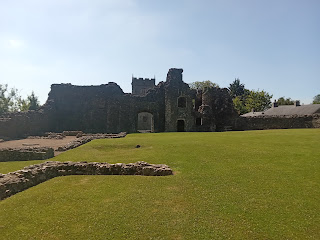DURING yesterday's free day in the chess tournament I caught a bus to Bran to visit Dracula's castle.
That, at any rate, is how Bran Castle is billed, although it is doubtful if author Bram Stoker even knew it existed.
Not only that but Vlad the Impaler, aka Vlad Dracula, and serial killer Elizabeth Báthory, two of the real-life characters said to have inspired Stoker, almost certainly never set foot in Bran Castle.
Still, it was a fun half-day out, and Bran Castle turned out to have an interesting history of its own.
Originally built in wood in 1212 by the Teutonic Knights, it was destroyed by Mongols in 1242.
Permission for a stone castle was granted by Louis the Great, King of Hungary, Croatia and Poland, in 1377 to Germans, known as Transylvanian Saxons, who lived in what was then Kronstadt but is now Brașov.
The castle was used as a defence against the Ottoman Turks and became a customs point, with the village of Bran - now town-size - growing up in its shadow.



























